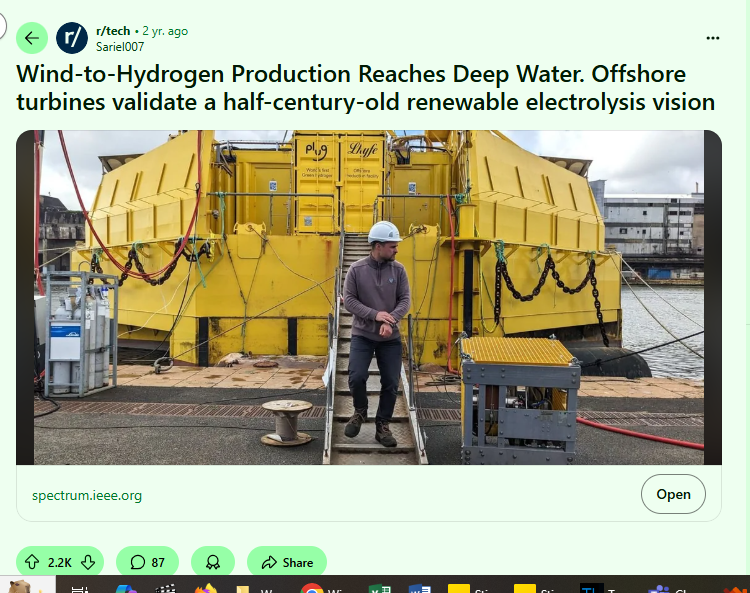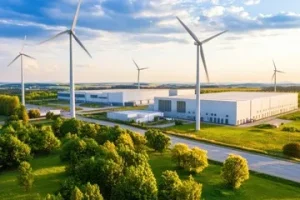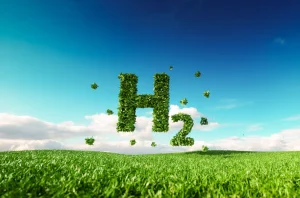Hydrogen Production via Electrolysis: A Key to Unlocking Energy Storage Solutions
We’re in a race—against carbon, climate change, and the clock. As the world pivots toward renewable energy sources like solar and wind, one big question remains unanswered:
Where do we store all that clean electricity when the sun isn’t shining or the wind isn’t blowing?
Here’s a bold answer: hydrogen.
Not the kind made from natural gas with a heavy carbon tag, but green hydrogen—produced through hydrogen production electrolysis, a process that uses electricity to split water into its elemental parts: hydrogen and oxygen. No fossil fuels, no emissions. Just clean, scalable energy with endless possibilities.
Let’s break it down into five critical insights to understand why green hydrogen production is more than a buzzword—it’s a breakthrough.

What Is Hydrogen Production Electrolysis—And Why Does It Matter?
At the heart of green hydrogen lies a surprisingly simple concept: turn water into hydrogen and oxygen using electrical energy.
This is called hydrogen production electrolysis, and it happens inside a machine called an electrolyzer. When powered by renewable energy sources, this process creates hydrogen with zero carbon emissions.
The magic? It’s clean, scalable, and perfect for storage or conversion back into electricity when needed. It’s not just an energy carrier—it’s a bridge between surplus supply and high-demand hours.
Why Hydrogen Production Electrolysis Is Changing the Energy Game
More than just a scientific process, hydrogen production electrolysis is becoming a cornerstone of the global clean energy shift. By using renewable electricity to split water into hydrogen and oxygen, this method creates fuel with zero carbon footprint—making it one of the most promising tools for decarbonizing industries, transportation, and power grids. Whether through alkaline systems or advanced PEM hydrogen production electrolysis, the ability to turn surplus wind or solar power into storable, dispatchable energy is transforming how nations think about energy security and sustainability. As costs fall and efficiency improves, green hydrogen from electrolysis is moving from niche pilot projects into large-scale, economically viable energy infrastructure.
Choosing the Right Electrolysis Technology for Your Needs
Not all green hydrogen production via electrolysis systems are the same, and matching the right technology to your application can make all the difference in performance and cost-effectiveness. For example, PEM electrolysers are ideal for projects tied to intermittent renewable power, offering quick ramp-up times and high-purity hydrogen output. Alkaline electrolysers, on the other hand, remain cost-competitive for steady, large-scale operations. Meanwhile, emerging solid oxide systems promise record-breaking efficiency when paired with industrial waste heat. By understanding the strengths of each, you can design a hydrogen production electrolysis setup that not only meets your immediate goals but also scales with the growing demand for clean hydrogen in the years ahead.
Electrolysis Technologies: The Three Power Players
When it comes to water electrolysis, not all systems are created equal. Here are the three front-runners:
🔹 Alkaline Electrolysis
An industry veteran. It uses a liquid alkaline solution (typically potassium hydroxide), allowing hydroxide ions to travel between electrodes. It’s cost-effective and reliable but less flexible under changing power loads.
🔹 PEM Electrolyzer (Proton Exchange Membrane PEM)
A modern marvel. This setup uses a polymer electrolyte membrane PEM to conduct protons and works seamlessly with fluctuating renewable energy. It’s compact, responsive, and delivers high-purity hydrogen at high pressure.
🔹 Solid Oxide Electrolysis
The high-temperature heavyweight. Operating between 700°C and 1,000°C, it uses solid oxide materials and is incredibly energy efficient when integrated with industrial waste heat. While still in development stages, it’s ideal for large scale operations.
Each technology plays a role in building out next-gen production facilities. But PEM electrolyzers are emerging as the top pick for fast, flexible, and clean hydrogen output.
Here’s what real engineers are saying on Reddit about Hydrogen Production Electrolysis:

The Cost Curve: Green Hydrogen vs. Fossil Fuels
Let’s talk numbers.
- Grey hydrogen (made from natural gas) costs ~$1–2/kg—but pollutes.
- Green hydrogen, made via hydrogen production electrolysis, ranges between $3–7/kg.
Yes, it’s pricier today. But here’s why it’s worth it:
- Prices of renewable electricity are plummeting.
- Electrolyzer tech (especially PEM) is becoming more affordable.
- Governments are backing green hydrogen with heavy investment and subsidies.
With optimized exchange membranes, improved high current density handling, and smarter alkaline electrolysis systems, we’re likely to hit cost parity by 2030—if not sooner.
Hydrogen’s Secret Weapon: Energy Storage and Mobility
Hydrogen is one of the few fuels that checks every box for future energy needs:
- Lightweight and energy dense (3x more than gasoline by weight).
- Perfect for fuel cells in hard-to-electrify sectors like aviation, shipping, and heavy industry.
- Ideal for long-duration energy storage in grids and microgrids.
Picture this: daytime solar energy gets stored as hydrogen. That hydrogen then powers homes, factories, or vehicles at night via fuel cells. It’s not theoretical—it’s already being done in pilot projects worldwide.
While the round-trip energy efficiency of converting electricity → hydrogen → electricity is still improving, the flexibility and scale it offers is unmatched.
Scaling Green Hydrogen: What’s Holding Us Back—and What’s Next
In 2024 alone, global investment in hydrogen topped $570 billion. That’s serious momentum.
What we need now is even smarter deployment:
- Upgraded exchange membranes for PEM systems.
- More efficient solid oxide setups integrated with waste heat.
- Bigger, smarter production facilities.
- Deeper integration with renewable energy sources.
The world isn’t just experimenting anymore. We’re executing. From electrical energy to fuel cells, the entire hydrogen ecosystem is ramping up for mass adoption.
Final Thought: Hydrogen Is No Longer “Next”—It’s Now
The transition to cleaner, smarter energy doesn’t hinge on one big breakthrough—it’s happening through steady, strategic innovation.
Hydrogen production electrolysis is emerging as a central pillar in this transition, offering not just a cleaner fuel but a whole new way to think about energy storage, mobility, and resilience.
And while challenges remain, the trajectory is clear: hydrogen isn’t a side bet. It’s the main event.
How PEM Electrolysis Works?
One of the most promising methods for green hydrogen production is PEM electrolysis, which uses a polymer electrolyte membrane (PEM)—also known as a proton exchange membrane (PEM)—to efficiently split water into hydrogen and oxygen. In this process, water molecules are separated by an electric current, causing hydrogen ions (protons) to move through the exchange membrane, where they form hydrogen gas at the cathode and release oxygen at the anode.
Unlike conventional hydrogen production from natural gas or other fossil fuel sources, PEM electrolysis enables large-scale, zero-emission hydrogen generation using renewable energy like solar or wind. As the system produces hydrogen without carbon emissions, it plays a key role in supporting fuel cells, industrial feedstock, and clean mobility. By leveraging this method to generate hydrogen, industries can move toward sustainable operations while contributing to a decarbonized energy future.
YonderH2: Driving the Hydrogen Evolution
At YonderH2, we’re not waiting for the future—we’re building it.
From cutting-edge PEM electrolyzer systems to expert integration of renewable energy sources and scalable production facilities, we specialize in unlocking the energy efficiency and power potential of green hydrogen.
Whether you’re a policymaker, an industrial player, or an energy visionary, we offer end-to-end solutions designed to decarbonize, optimize, and future-proof your operations.
Ready to Take the Hydrogen Leap?
Partner with YonderH2 to explore custom-built, cost-efficient, and future-ready green hydrogen solutions.
Technological improvements are making hydrogen production via electrolysis more efficient and sustainable. Approaches like Decoupled Water Electrolysis (DWE) enable the production of hydrogen and oxygen in separate steps, enhancing safety and reducing energy consumption. Additionally, chemical-assisted electrolysis methods are being developed to lower operational voltages by replacing the traditional water oxidation reaction with alternative chemical reactions. This innovation not only improves energy efficiency but also has the potential to generate valuable byproducts, making hydrogen production more cost-effective and adaptable to diverse industrial applications. These advancements are paving the way for widespread adoption of hydrogen as a clean energy carrier.
As the world shifts towards a future powered by clean energy, the demand for reliable and scalable energy storage solutions is skyrocketing. While solar and wind energy have become mainstream, their intermittent nature poses a significant challenge: how do we store surplus energy for future use? Enter hydrogen production via electrolysis, a groundbreaking solution that holds the key to unlocking energy storage on a massive scale.
Hydrogen production electrolysis is a process where water is split into hydrogen and oxygen using electricity. Electrolysis not only produces clean hydrogen but also offers a powerful way to store excess renewable energy. In this blog, we’ll explore why hydrogen production via electrolysis is becoming a cornerstone of energy storage, driving us toward a more sustainable and resilient energy future.

What is Electrolysis, and Why Does It Matter?
Electrolysis is a process that uses electricity to split water (H₂O) into hydrogen (H₂) and oxygen (O₂). When powered by renewable energy sources such as solar and wind, this method produces green hydrogen—a clean, carbon-free fuel that can be stored, transported, and utilized across multiple sectors.
Here’s why electrolysis is gaining attention:
- It provides an efficient way to convert excess renewable energy into hydrogen.
- The hydrogen produced can be stored for long periods without energy loss.
- It offers a clean alternative to fossil fuels for industries, transportation, and power generation.
Essentially, electrolysis bridges the gap between renewable energy generation and energy storage, solving one of the most critical challenges in the clean energy transition.
Why Hydrogen is the Ultimate Energy Storage Solution
The primary challenge with renewable energy sources like solar and wind is their intermittency—energy production fluctuates depending on weather and time of day. While batteries can store energy for short durations, hydrogen offers a long-term, large-scale storage solution. Here’s how:
- Energy-to-Hydrogen Storage: During periods of excess renewable energy (like sunny afternoons or windy nights), surplus electricity powers electrolysis to produce green hydrogen.
- Long-Duration Storage: Unlike batteries, which lose charge over time, hydrogen can be stored in tanks or underground for months without degradation.
- Flexible Conversion: When energy is needed, stored hydrogen can be used in fuel cells to generate electricity or burned as a clean fuel, emitting only water vapor as a byproduct.
This ability to store and release energy on demand makes hydrogen a game-changer for grid stability, industrial energy needs, and clean transportation.
Applications: Where Does Stored Hydrogen Shine?
Hydrogen produced via electrolysis is not limited to a single application; its versatility makes it an ideal energy storage solution across industries and infrastructure:
- Grid Balancing and Backup Power
Renewable energy production often exceeds grid demand during peak hours. Instead of curtailing energy, electrolysis can store the surplus as hydrogen. During low production periods or power shortages, the stored hydrogen can be converted back to electricity via fuel cells, ensuring a stable energy supply. - Industrial Energy Storage
Heavy industries such as steel, cement, and chemicals require continuous and high-power energy inputs. Hydrogen can act as a backup power source, decarbonizing energy-intensive processes while supporting uninterrupted operations. - Transportation Fuels
Hydrogen fuel cell vehicles (FCVs), including buses, trucks, and trains, use hydrogen as an energy source. Electrolytic hydrogen storage ensures a continuous and scalable supply of clean fuel, eliminating emissions from heavy transportation sectors. - Seasonal Energy Storage
For countries like India, where renewable energy peaks in certain seasons (e.g., monsoon winds or summer sun), hydrogen storage bridges the seasonal gap by storing energy when production is high and releasing it when needed. - Export of Green Hydrogen
Stored hydrogen can be transported as liquid hydrogen or in chemical forms like ammonia to regions with lower renewable resources, positioning hydrogen-rich countries like India as global energy exporters.Here’s your enhanced version with non-numbered bullets added for easier readability and flow, while retaining the additional 400 words and 3 keyword repetitions of “hydrogen production electrolysis”:
Innovations in Electrolysis Technology
The future of hydrogen storage is being shaped by rapid advancements in electrolyser technology. Some notable innovations include:
Improved Efficiency
Modern electrolysers, such as PEM (Proton Exchange Membrane) and SOEC (Solid Oxide Electrolysers), are achieving higher energy efficiencies, reducing the energy needed to produce hydrogen.Cost Reductions
Innovations in materials and economies of scale are driving down the cost of electrolysers, making hydrogen production more affordable.Modular Electrolysers
New modular systems allow electrolysers to be deployed at various scales, from small community grids to gigawatt-scale hydrogen plants.
These advancements are accelerating the adoption of electrolysis as a mainstream energy storage solution, creating opportunities for industries and governments to embrace green hydrogen.
Digital Integration and Smart Controls
In addition to hardware improvements, digital innovations are enhancing system performance. Smart electrolysers equipped with real-time monitoring, AI-driven control systems, and predictive maintenance capabilities are improving operational reliability and uptime. These digital tools enable better optimization of energy input and output, especially when electrolysers are integrated with variable renewable sources like wind and solar.Advanced Catalysts and Materials
Innovations in catalyst materials—such as non-platinum group metals and nanostructured surfaces—are lowering the cost and increasing the durability of electrolysis stacks. These developments are crucial to scaling up hydrogen production electrolysis while maintaining economic feasibility.Hybrid and Integrated Systems
New hybrid systems are also emerging, where electrolysis is combined with other energy storage or generation technologies, such as fuel cells or battery systems, to offer more flexible and resilient energy solutions. These integrated platforms support decentralized energy architectures, which are especially useful for rural or off-grid applications.
India’s Opportunity: Leading the Hydrogen Storage Revolution
India, with its vast solar and wind resources, is uniquely positioned to become a global leader in hydrogen production and storage. Initiatives like the National Green Hydrogen Mission are driving investments in electrolyser manufacturing, hydrogen infrastructure, and renewable energy integration.
Renewable Power Hubs
Regions like Gujarat, Rajasthan, and Tamil Nadu are emerging as hubs for green hydrogen production, leveraging abundant solar and wind energy.Grid Stability
Stored hydrogen can stabilize India’s national grid, reducing dependence on coal-based power plants.Industrial Decarbonization
Sectors such as steel, fertilizer, and petrochemicals are ready to adopt green hydrogen as a clean energy alternative.Policy and Manufacturing Support
Government support, policy reforms, and private sector engagement are critical to scaling up hydrogen production electrolysis in India. By developing domestic manufacturing capabilities and research ecosystems, the country can reduce reliance on imported technology and foster indigenous innovation.
With the right strategy, India can establish itself as a global innovation hub for hydrogen production electrolysis, contributing not only to national energy goals but also to global climate action.
By embracing hydrogen production, India can achieve its energy security goals, reduce carbon emissions, and emerge as a clean energy superpower.
Conclusion: Electrolysis—Unlocking the Energy Storage Future
Hydrogen production via water electrolysis is more than just a clean fuel solution—it’s the key to solving the energy storage puzzle. By converting surplus renewable energy into hydrogen, we can store power efficiently, stabilize grids, and fuel industries and transportation systems sustainably. Advanced methods like PEM electrolysis and alkaline electrolysis utilize electrical energy to split water molecules, enabling efficient hydrogen generation. In proton exchange membrane (PEM) electrolysis, a polymer electrolyte membrane or solid polymer electrolyte facilitates the process where critical reactions occur to produce high-purity hydrogen. Additionally, hydrogen can be produced from natural gas through reforming processes, offering a complementary pathway for meeting energy demands while transitioning toward greener solutions.
In a world striving for net-zero emissions, these electrolysis technologies provide the tools needed to balance renewable energy supply and demand, ensuring a resilient and clean energy future. As innovations drive down costs and improve efficiency, renewable hydrogen storage will unlock new possibilities for energy security and global decarbonization.
As the world shifts toward a cleaner energy landscape, hydrogen provides a way to power industries, transportation, and electricity generation with minimal environmental impact. Hydrogen fuel for the future offers a sustainable and versatile energy solution that can significantly reduce carbon emissions. By using renewable energy sources to produce hydrogen, it plays a vital role in creating a more sustainable and resilient energy future.
For India and the world, the path to a sustainable energy future is clear—and hydrogen is leading the way.





